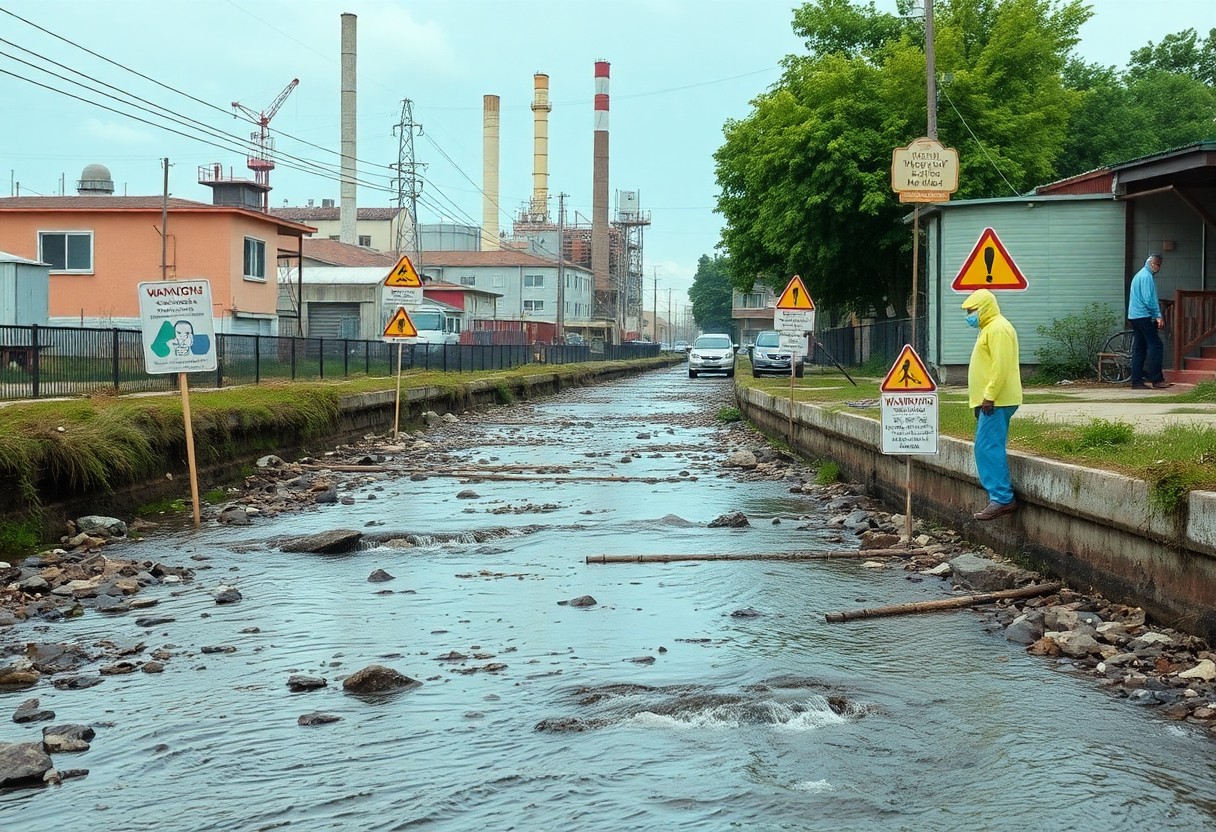You have a right to understand how PFAS settlements are divided in class action lawsuits, especially given their increasing prevalence in environmental litigation. Courts employ various methods to ensure that settlement amounts are distributed fairly among affected parties. This process typically considers factors such as harm extent, individual claims, and the responsible parties. By dissecting these settlement processes, you can gain insight into how your rights may be upheld and what to expect should you find yourself involved in such litigation.

Understanding PFAS and Their Impact
For many people, the term PFAS may be unfamiliar, yet these substances are increasingly recognized for their significant impact on public health and the environment. As you probe into the complexities of PFAS, it becomes clear how these chemicals have been widely used in various industries, raising critical concerns about their persistence and potential harmful effects on human health.
Overview of PFAS Chemicals
An overview of PFAS, or per- and polyfluoroalkyl substances, reveals that these synthetic chemicals have been used since the 1940s in products like non-stick cookware, stain-resistant fabrics, and firefighting foams. Their unique properties make them effective but also contribute to their persistence in the environment, leading to widespread contamination.
Health and Environmental Concerns
PFAS exposure carries significant health and environmental concerns that you should be aware of. These chemicals are linked to serious health issues, including elevated cholesterol levels, immune system impacts, and certain types of cancer, prompting urgent discussions about public safety.
Another serious concern is the persistence of PFAS in the environment, meaning they do not easily break down and can accumulate over time. This accumulation poses risks not just to human health but also to wildlife and ecosystems. You should also be aware that these chemicals can contaminate drinking water sources, making it crucial to advocate for proper regulation and cleanup efforts to protect both your health and the environment.
Class Action Lawsuits Involving PFAS
Even as awareness grows about the dangers of PFAS, you should understand that numerous class action lawsuits have emerged. These legal actions often arise from the contamination of water supplies and potential health impacts linked to these toxic chemicals. By joining together, affected individuals can strengthen their claims against responsible parties, such as manufacturers and polluters, seeking compensation and accountability.
Key Cases and Outcomes
Before exploring recent developments, you should note several pivotal cases have shaped the landscape of PFAS legal actions. Outcomes in these cases often include substantial settlement amounts, indicating the seriousness of the issue and encouraging other affected parties to pursue claims.
Legal Basis for Class Actions
Above all, it is imperative to understand the legal foundations for class actions concerning PFAS. When individuals share common legal or factual issues, they can band together to sue collectively, making it more efficient for the legal system.
Hence, class actions provide a powerful mechanism for individuals affected by PFAS contamination. By demonstrating that you and others have suffered similar harms, you stand a better chance of obtaining justice and compensation. This method not only reduces the burden on the court system but also amplifies your voice against corporations and entities responsible for environmental damage. Class actions offer a pathway for collective advocacy, making it easier to hold parties accountable for their actions.
Factors Influencing Settlement Amounts
Now, several key factors can significantly influence the settlement amounts in PFAS class action lawsuits. These include:
- Severity of contamination
- Health impacts on affected individuals
- Extent of damages claimed
- Defendants’ financial capacity
Recognizing these factors can help you understand how settlements are negotiated and divided among claimants.
Damage Assessments
By assessing the damages incurred by affected parties, courts can evaluate the potential compensatory amounts owed. This assessment often includes medical expenses, loss of income, and long-term health effects, providing the foundation for just settlements.
Number of Claimants
On considering the number of claimants involved, this factor can significantly impact the total settlement amount and how it gets distributed. A larger pool of claimants may dilute individual compensation, leading to lower payouts per person.
To explore further, a high number of claimants can alter settlement dynamics. Courts often aggregate claims, which means that each individual’s assessment may not reflect your unique situation adequately. In large settlements, you could experience a smaller share despite significant personal losses, as distribution typically favors broader coverage rather than individual circumstances. This dilution of individual claims emphasizes the importance of advocating for fair representation, ensuring your needs and losses are effectively communicated in the legal proceedings.
The Role of Courts in Dividing Settlements
Not every class action settlement apportionment is straightforward. Courts play a vital role in ensuring that the allocation process is equitable and legally sound. Judges analyze various factors, including the merits of claims and the particular circumstances of the parties involved, to determine how settlements are divided. You may find that transparency and fairness are central tenets guiding judicial decisions in such matters.
Settlement Structures
The distribution of a settlement often hinges on the structure established during negotiations. In many cases, courts evaluate whether the proposed settlement deals equitably address the diverse impacts of PFAS exposure among class members. This means you could see variations in compensation based on individual claim circumstances, ensuring that everyone potentially affected receives fair consideration.
Judicial Discretion and Guidelines
Settlement fairness relies heavily on both judicial discretion and established guidelines. Courts utilize these parameters to evaluate whether the settlement is appropriate given the context of the claims made.
Judicial discretion allows judges to exercise their judgment in interpreting the settlement’s fairness and adequacy. Courts often use guidelines, such as the percentage of claims filed and the severity of harm suffered by class members, to guide their decisions. You may find that the court emphasizes the proportionality of awards, striving to balance the immediate compensation needs of members with the long-term implications of PFAS exposure. This careful consideration helps ensure that settlements provide adequate relief while fostering trust in the judicial process.
Challenges in Settlement Distribution
Your understanding of PFAS class action settlements cannot be complete without recognizing the inherent challenges in settlement distribution. Courts often face difficulties in fairly allocating funds among diverse claimant profiles, leading to potential disputes and dissatisfaction among affected individuals. As you examine deeper, these challenges highlight the complexities surrounding equitable compensation.
Equitable Distribution Issues
About the equitable distribution of settlement funds, the fundamental challenge lies in addressing the varying degrees of harm experienced by different claimants. Given that not all individuals affected by PFAS contamination suffer equally, determining a fair compensation formula can be complicated and contentious.
Common Objections from Claimants
By exploring common objections from claimants, you will find that many individuals express concerns over perceived unfairness in the allocation process. Claimants may argue that their specific circumstances warrant a greater share, or they may feel misrepresented in the distribution plan.
Understanding these objections sheds light on the multifaceted emotions involved in class action settlements. Claimants often feel that their personal experiences and damages are inadequately represented in the settlement structure. Additionally, disputes may arise over the criteria used to define eligibility for compensation and the methodology applied in calculating individual payouts. Strong sentiments of unfairness can lead to frustration and distrust in the legal process, illustrating the importance of transparent communication and inclusive dialogue during settlement distribution.
Future Implications for PFAS Settlements
All indications suggest that the landscape for PFAS settlements will evolve as awareness of these substances increases. As more communities and individuals become affected by PFAS pollution, your understanding of settlement dynamics will be critical. Courts may adopt new approaches to litigation, influenced by legislative changes and public sentiment, which can directly impact your involvement in any potential settlement processes.
Evolving Legal Landscape
By recognizing the ongoing shifts in PFAS litigation, you can better navigate the complexities of class actions. Courts are increasingly considering the long-term health impacts and environmental consequences of PFAS, which could inform how they divide settlements. This evolving legal framework means you must stay informed about new precedents and rulings that may shape future claims.
Potential for Legislative Changes
Between current trends and increasing public pressure, you might witness significant legislative changes aimed at regulating PFAS. As states and federal agencies grapple with PFAS issues, it’s crucial for you to stay updated on newly proposed rules that can affect liability and compensation in class action cases.
Another aspect to consider is that ongoing discussions around stronger regulatory measures will likely push for more meaningful compensation structures in PFAS cases. As legislators focus on holding manufacturers accountable, you could see a paradigm shift where legal outcomes favor victims more clearly. This potential change may enhance your chances of receiving fair settlements and encourage proactive measures to address health risks associated with PFAS pollution.
Final Words
Upon reflecting on how courts split PFAS settlements in class actions, it’s crucial for you to understand the complexities involved in distribution and fairness. The allocation process considers various factors, including the extent of harm, the number of claimants, and overall legal strategies employed. By grasping these components, you can better appreciate how individual cases might be impacted by broader class actions and the potential for equitable redress. Engaging with this knowledge empowers you to navigate the implications of PFAS litigation effectively.



















